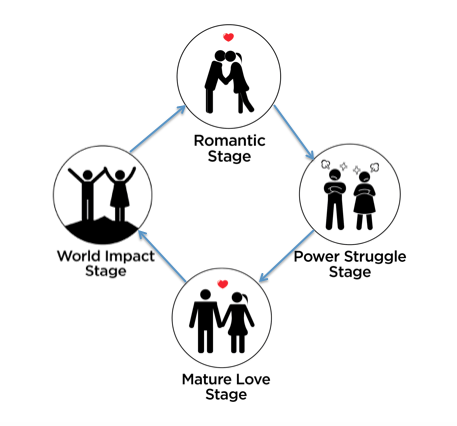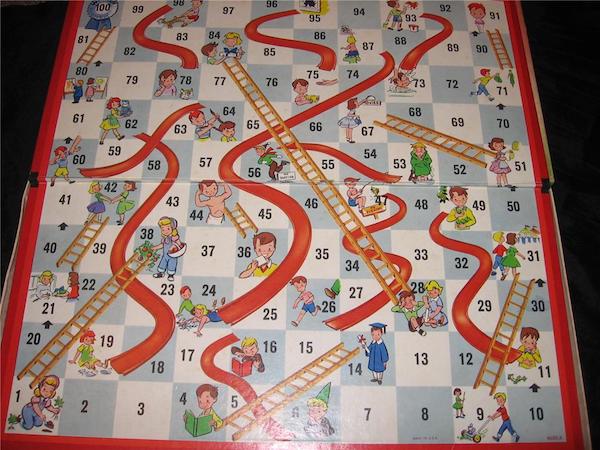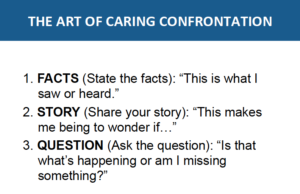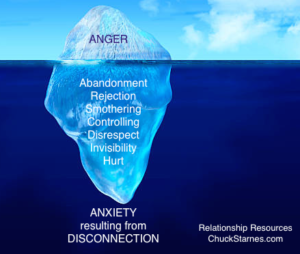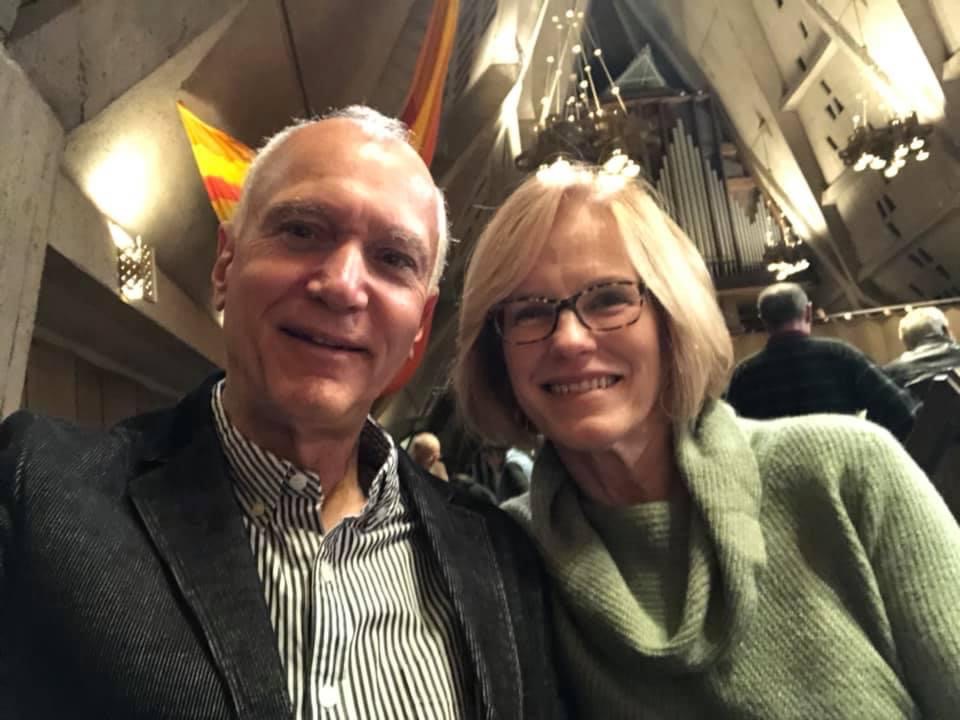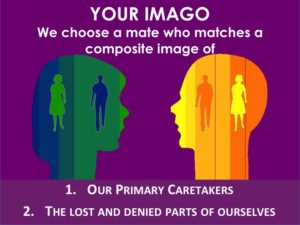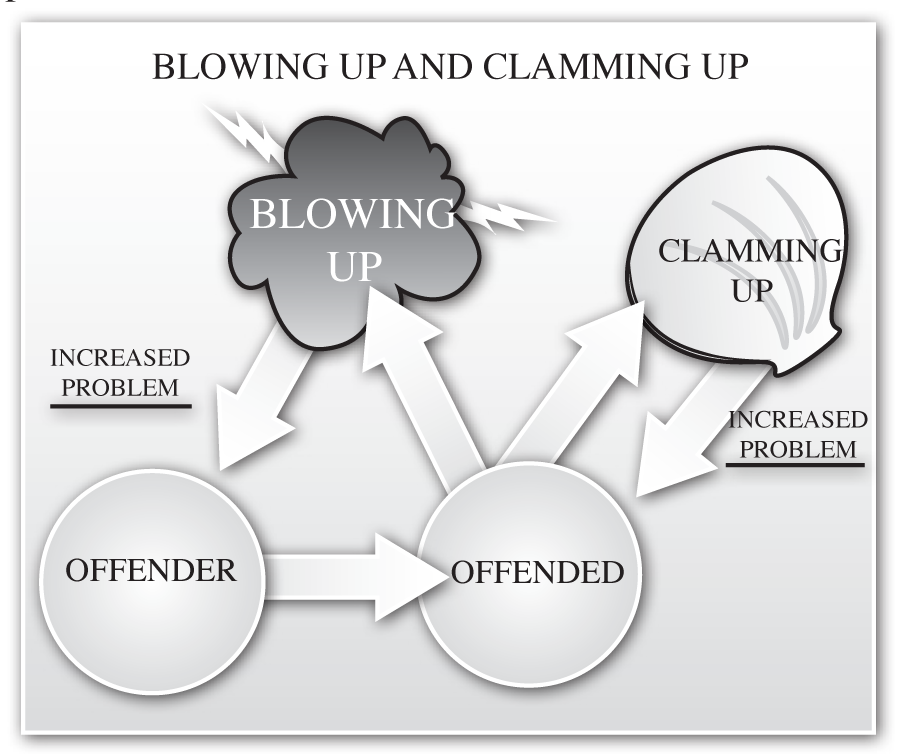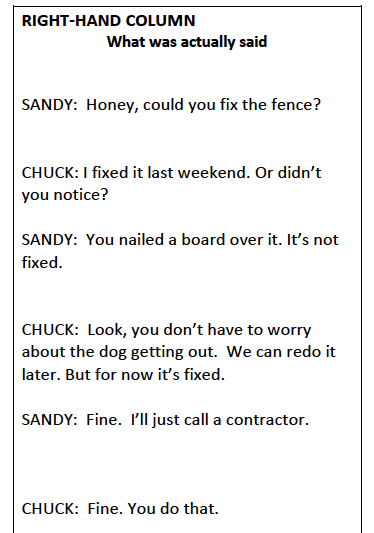Most marriages start with the wonderful feelings of romance but soon descend into a power struggle that can be brutal.
That’s when we say things like:
‘If only you would change, I could be happy!’
‘You could meet all my needs if you wanted to. And since you don’t, you don’t love me.’
The unconscious reasoning is:
‘If I cause you enough pain, you’ll change and meet my needs. Then we can go back to romantic love.’
How do we get to this place?
How is it possible to dish out such emotional abuse toward this person that we promised to always cherish and protect?
On the surface it makes no sense. But when we see what’s happening unconsciously, it makes perfect sense.
Dr. Harville Hendrix shared a seven-step process that explains how our marriage goes from empathy and connection to objectification and emotional abuse.
1. Disconnection produces ANXIETY
Whenever there is a feeling of disconnection in marriage the immediate result is ANXIETY.
Anxiety is not a feeling or an emotion, but a sensation that runs through our bodies.
It first occurred as a child with our primary caretakers. As the Still Face Experiment shows, when the rupture in connection between the child and parent occurs, the result is anxiety. When it is repaired, anxiety goes away, and the child feels alive and happy again.
But for some of us, that repair and reconnection was not consistent. And continued anxiety was the result.
This dramatically affects our adult relationships. Whenever we feel a disconnection with our marriage partner, this same anxiety is triggered.
2. Anxiety replaces FULL-ALIVENESS
The anxiety produced by the disconnection replaces the previous sensation which was FULL-ALIVENESS.
As our neural system is flooded with anxiety we no longer sense the full-aliveness we experienced before.
3. Loss of full-aliveness gives birth to DESIRE
When anxiety shows up, it’s accompanied by DESIRE for what was lost, which is that feeling of full-aliveness that is no longer being experienced.
Buried in every criticism or frustration with your partner is a desire to reconnect and restore that feeling of full-aliveness.
So the beginning of desire occurs with the loss of connection and the appearance of anxiety.
From the time that this wounding first occurred in childhood, you have been on a journey to find someone who will help you complete what was missing in childhood and help you feel fully alive again.
That’s what Romantic Love is all about.
When you find a person who matches your parents’ positive and negative traits, you fall for that person and form a relationship. What you don’t realize is that deep in your mind is an unconscious agenda to heal childhood wounds.
And that’s what the Power Struggle is all about.
Because your partner is like the parent who wounded you, conflicts with your partner bring to the surface old wounds you need to heal.
Healing can only take place as you and your partner become conscious of what is happening and turn your criticism into a positive expression of your desire.
That proves difficult because…
4. Desire results in SELF-ABSORPTION
When we experience that rupture and the anxiety that goes along with it, we become self-absorbed.
SELF-ABSORPTION is the main feature of pain.
There was a little girl who loved the beach. One day she was enjoying all of its beauty – the sun, the water, the colors, the seagulls flying overhead, the warm sand’¦
…but then, suddenly, she stubbed her toe on a rock.
All the wonder of this amazing world outside disappeared, and all she was aware of was the pain that was throbbing within her.
Self-absorption is what happens psychologically to all of us when emotional pain is triggered.
When that pain is triggered, our brain stops taking in outside information. That’s when we lose awareness of other people.
When we are receiving information only from within our own psychoneural system, it’s not possible to see, acknowledge, or empathize with another person’s reality.
The emotional pain from childhood that our partner triggers floods our psyche. That’s when we lose sight of our partner and we become absorbed only in our own pain.
5. Self-absorption results in SYMBIOSIS
Because you’re not getting data about your partner from the outside, you start creating an image of your partner with the data you have inside.
You construct your partner with the figments of your own imagination.
You think you are experiencing your partner, but in reality you’re experiencing your own projections of your partner, not who your partner really is.
This is called ’emotional SYMBIOSIS’. It’s when you assign to your partner your inner world and you assume they are you – that they think and feel the way you do.
‘That’s a great song! Of course you like it too. Wouldn’t everyone?’
‘Who would ever want their living room painted green? Everyone can see that green is not a very attractive color!’
Self-absorption requires your partner to agree with you and see everything the way you do.
6. Symbiosis results in POLARIZATION
As you’re stuck in this self-absorbed, symbiotic state, you’re rattled whenever you encounter a difference in your partner.
When your partner’s perspective, or opinion, or desire is different from your made-up image of him or her, it’s traumatic and POLARIZATION results.
That’s when you feel your partner is no longer someone you can talk to, no longer someone who is safe.
Soon you’re fully engaged in the Power Struggle Stage of your marriage. This is when you begin wanting your partner to change.
You feel like, ‘If my partner doesn’t change, I can’t be happy.’
7. Polarization results in OBJECTIFICATION
As polarization happens, you lose empathy for your partner. You are no longer in touch with what your partner is feeling.
That’s when OBJECTIFICATION occurs. Your partner has been effectively degraded to the status of a mere object.
When people become objects, we can treat them any way we want.
We can criticize them, yell at them, or label them. We can withdraw from them even if it makes them feel abandoned.
We can do anything to them we feel like, because they are no longer human. They are just things that serve us. And they become objects of our frustration.
This is how it’s possible for married partners to treat each other so badly.
So what can I do?
The Imago Couple’s Dialogue is a tool that can help you restore empathy and reconnect with each other.
Here’s how the three steps of the Imago Couples Dialogue can help.
MIRROR
When you MIRROR your partner’s feelings, you begin to see who your partner really is. When your partner feels heard, she or he feels loved.
VALIDATE
When you VALIDATE your partner’s feelings, you begin to see how their thoughts make sense from their perspective. Validation is not agreeing with your partner, but it’s seeing how their perspective makes sense according to their own inner logic. Validation results in differentiation and neutralizes the trauma so that polarization does not occur.
EMPATHIZE
When you EMPATHIZE with your partner’s feelings, healing occurs and safety is restored. You see your partner as human and not as an object, and connection is possible. It’s impossible to criticize someone you are empathetic with.
CLICK HERE and print out two copies of the Couples Dialogue. Begin using it today to reconnect with each other and disrupt this tendency to treat each other so badly.










